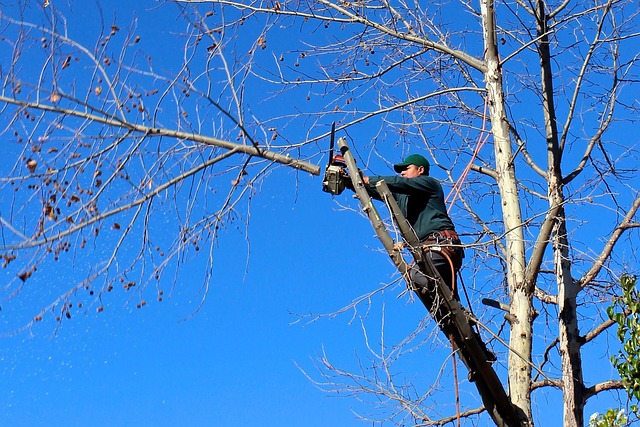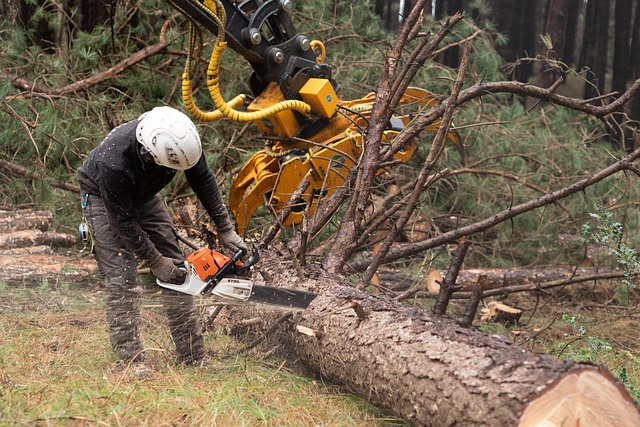Emerald Ash Borer (EAB) infestations pose a significant threat to Denver's urban forest, but proactive treatment options offer hope. These include preventive insecticide applications and biological controls like parasitoids and nematodes. After successful infestation management, maintaining tree health through proper care and regular inspections is vital. For effective, tailored solutions in Denver neighborhoods, consulting professional pest control and tree care services specializing in local EAB management is recommended.
In Denver’s vibrant landscape, tree care is not just an aesthetic concern but a vital component of our urban ecosystem. One insidious threat, however, looms large: the Emerald Ash Borer (EAB). This intruder has infested numerous ash trees across the city, posing a serious challenge to homeowners and arborists alike. Understanding EAB infestations, exploring effective treatment options, and adopting robust prevention strategies are essential steps in mitigating this problem. Discover practical insights on treatment for Emerald Ash Borer in Denver neighborhoods to safeguard our urban forest.
- Understanding Emerald Ash Borer Infestations in Denver
- Effective Treatment Options for EAB Control
- Maintaining Tree Health Post-Infestation Prevention Strategies
Understanding Emerald Ash Borer Infestations in Denver

Emerald Ash Borer (EAB) infestations have become a significant concern in Denver, affecting many neighborhoods and tree species. This invasive beetle lays its larvae under the bark, feeding on the tree’s nutrient-rich layers, which eventually leads to its death. Recognizing the signs of an EAB infestation is crucial for effective treatment. Residents should look out for distinctive D-shaped holes in the bark, as these are the entry points for the beetles. Additionally, bark fragments and small, saw-like notches on branches are indicative of the beetle’s presence.
Treatment options for EAB infestations in Denver neighborhoods include both preventive and curative measures. Preventive treatments involve applying insecticides to trees before an infestation occurs, targeting areas known to be at risk. Curative methods, on the other hand, focus on protecting already infected trees with regular applications of approved pesticides. Early detection and treatment are vital to managing EAB infestations effectively, ensuring the health and longevity of Denver’s urban forest.
Effective Treatment Options for EAB Control

In the fight against Emerald Ash Borer (EAB) infestation, several effective treatment options have emerged as powerful tools for Denver residents and arborists alike. One proven method involves the use of insecticides that target specific stages of the EAB life cycle. These treatments can be applied directly to the tree bark, ensuring maximum impact on the borers while minimizing environmental impact. For best results, professional application is recommended due to the precise nature of the treatment areas.
Additionally, biological control methods have gained popularity as a sustainable approach to EAB management. Encouraging natural predators like parasitoids and nematodes can help regulate ash borer populations over time. This eco-friendly strategy not only reduces reliance on chemical insecticides but also contributes to the overall health and biodiversity of Denver’s urban forest.
Maintaining Tree Health Post-Infestation Prevention Strategies

After successfully addressing a pest infestation, such as the Emerald Ash Borer (EAB) that has plagued Denver neighborhoods, maintaining tree health is paramount to prevent future issues. The first step is to assess the overall well-being of the tree, ensuring it’s robust enough to resist future attacks. This involves providing proper nurturing, including regular watering, especially during droughts, and applying balanced fertilizers to support its recovery. Trimming dead branches and removing infected parts promptly helps in controlling the spread of diseases and pests.
To bolster defense mechanisms, consider implementing preventive strategies like maintaining a healthy tree canopy, promoting good air circulation, and ensuring adequate sun exposure. Regular inspections are crucial to catch any new infestations early on. Additionally, using organic or approved pest control methods can help manage potential threats naturally. For the EAB treatment in Denver, professional services specializing in local pest control and tree care practices should be consulted for tailored solutions that consider the unique needs of the city’s diverse tree species.
In conclusion, effectively managing tree care pest infestations, such as the Emerald Ash Borer in Denver, requires a multi-faceted approach. By understanding the nature of these infestations, employing effective treatment options, and implementing preventive strategies, homeowners and neighborhood associations can protect their ash trees and maintain the overall health of urban landscapes. With proper care and proactive measures, Denver neighborhoods can ensure their trees thrive, enhancing the beauty and resilience of their communities for years to come.
